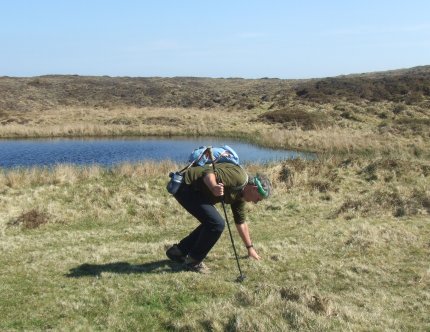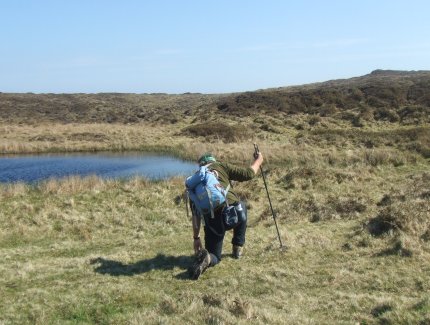|
 Dwight Peck's personal website Dwight Peck's personal website
The
north of Ireland, April 2007
Winter
2006-2007 spent waiting around for winter
Ireland
(and Northern Ireland) in the springtime
You
may not find this terribly rewarding unless you're included here, so this is a
good time for casual and random browsers to turn back before they get too caught
up in the sweep and majesty of the proceedings and can't let go.
     
Rathlin
Island -- the East Lighthouse
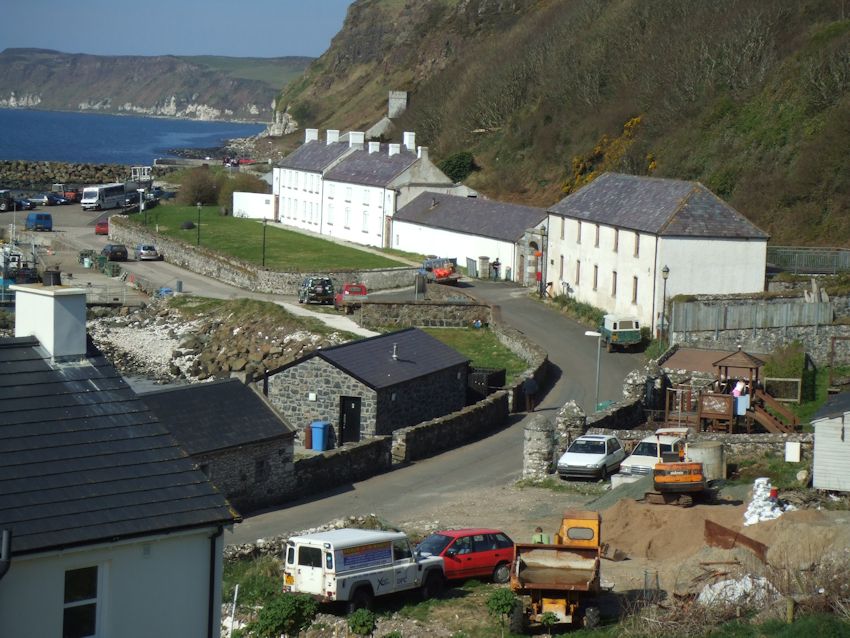
We're
marching out of Church Bay, 12 April 2007, bound for the East Lighthouse. The
children's playground on the right has this charming sign on it:

"Adults
are not welcome unless accompanied by a responsible child."
(The rusted
bolts make it look a bit like an untidy crucifixion.)
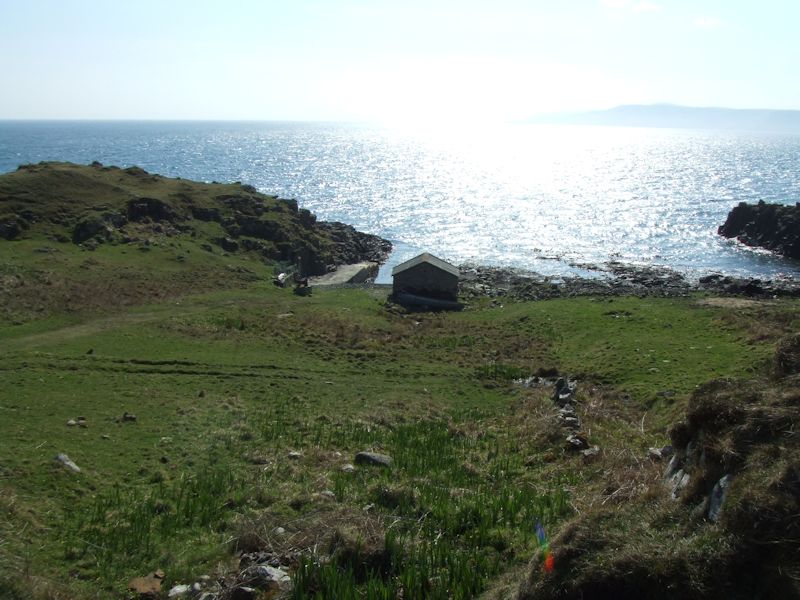
We
were walking out towards the East Lighthouse on the approved tarmac road, and
then a sort of fit overtook us, and we just couldn't walk on the tarmac anymore,
so we hopped it and wandered off into what's apparently forbidden territory, i.e.,
the coast.
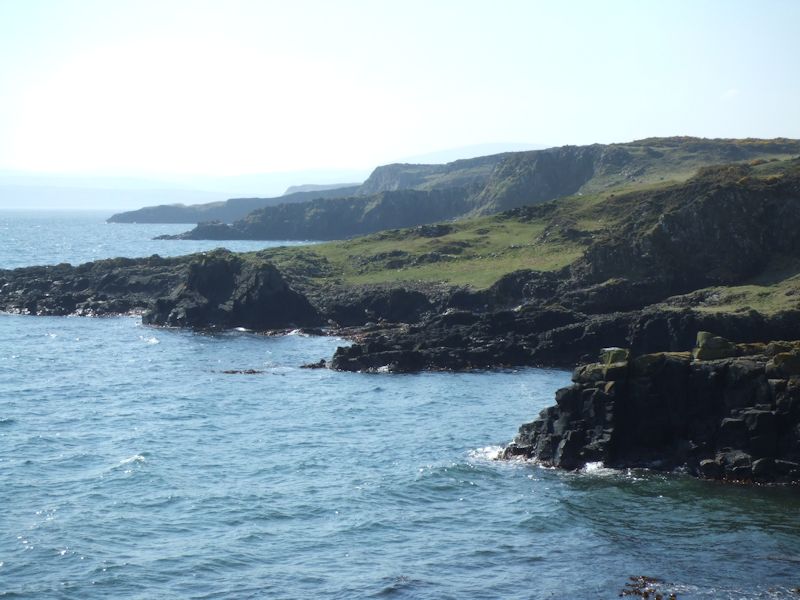
Ah!
That's much better, we can breathe more freely now. Sheep farmers seem to be so
possessive (like we were going to kick their sheep or something)! And the views
out here are worth the trouble!

Kristin
ambling towards "Bruce's Castle". Oh what a great lot of history has
preceded us here! Robert the Bruce sojourned here after the thorough thumping
he received from the English at Perth in 1306, living in a cave at the base of
those cliffs, dining upon his shoes until they ran out, and meditating upon a
spider trying over and over to build a web which taught him the value of perseverance,
so he went back to defeat the English at the battle of Bannockburn in 1314. Bruce's
Cave is said now to be accessible only by boat, and I believe it.
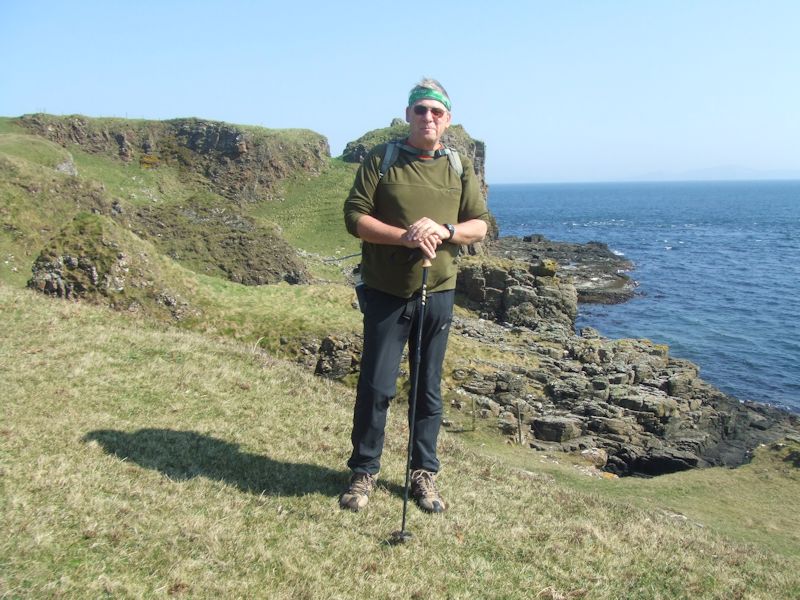
The
narrator inhibiting our view of Bruce's Castle. The "Castle" part came
about years after Robert the Bruce himself had gone off to join the Long Fathers.

Here's
another Rathlin historical tidbit: During the "Elizabethan Conquest of Ireland",
Mr Francis Drake (not yet "Sir Francis" and not yet having set off on
his famous Circumnavigation of the World (1577-1580)) commanded the ships that
brought Sir John ("Black Jack") Norris's English troops and cannon onto
Rathlin Island in 1575, where Ole' Black Jack destroyed the Bruce Castle and massacred
the entire populace of the island. All of them, by the reports. Just one of many
Rathlin atrocities.
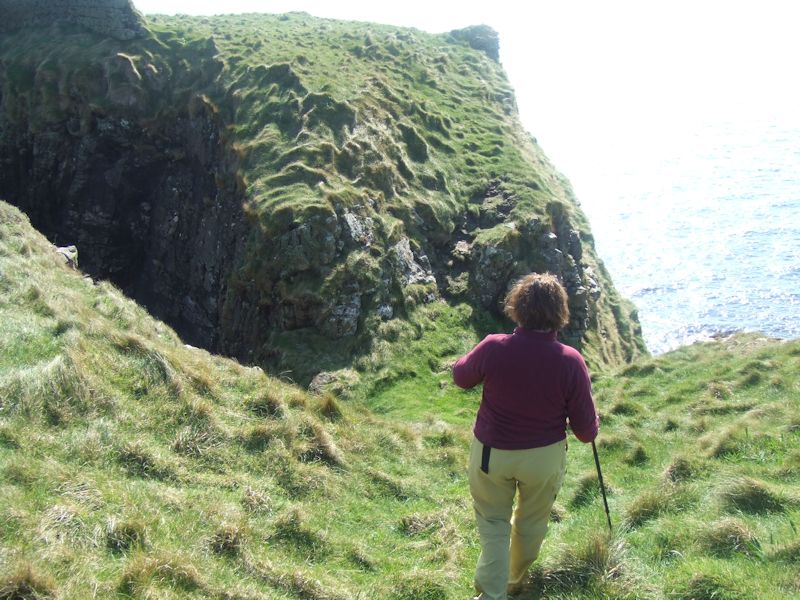
Kristin
preparing to visit Bruce's Castle or what's left of it. Bruce's famous spider
cave is down somewhere on the right. Speaking of Rathlin atrocities, The Hill
of Screaming, in the middle of the island, got its name from when the women and
children of the MacDonnells retreated there in 1642 and got to watch all of their
menfolk being butchered by the Clan of Campbell.
You'd
think we'd have progressed a bit since then. But then you pick up a newspaper.

Kristin
and Robert the Bruce's Spider Cave (below).
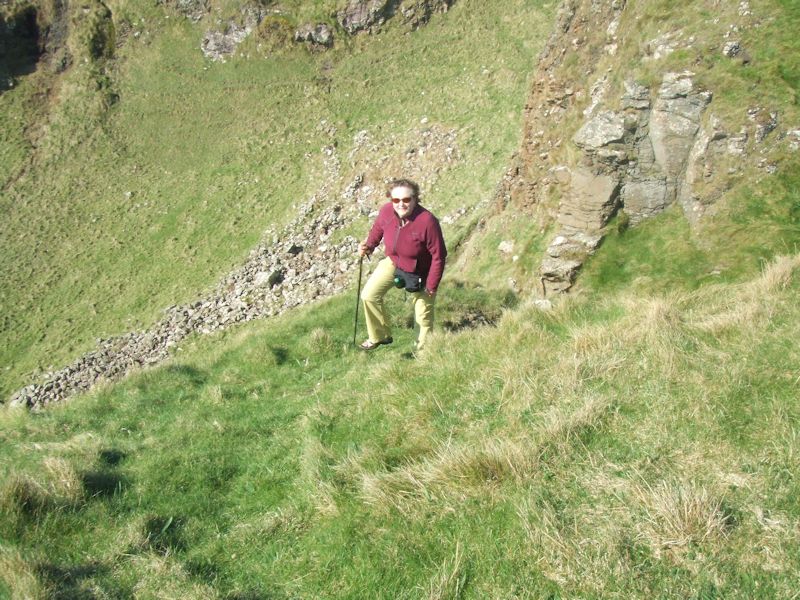
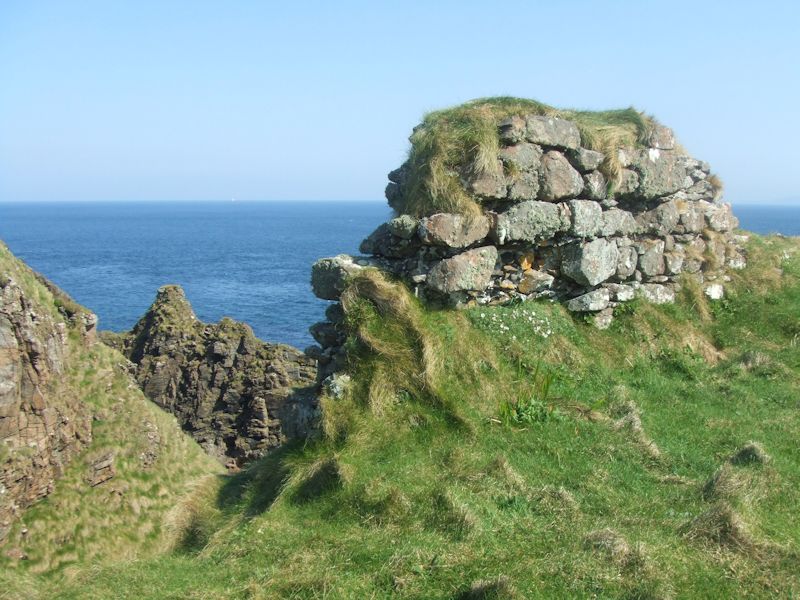
All
that's left of Bruce Castle, after Black Jack Norris got done with it in 1575.
(One of his near successors in Ireland, Arthur Lord Grey of Wilton, beseiged a
small Spanish/Italian invasion force at Smerwick in the southwest of Ireland,
November 1579, and then granted them safe passage home when they surrendered,
and slaughtered them all after they'd turned over their arms.)
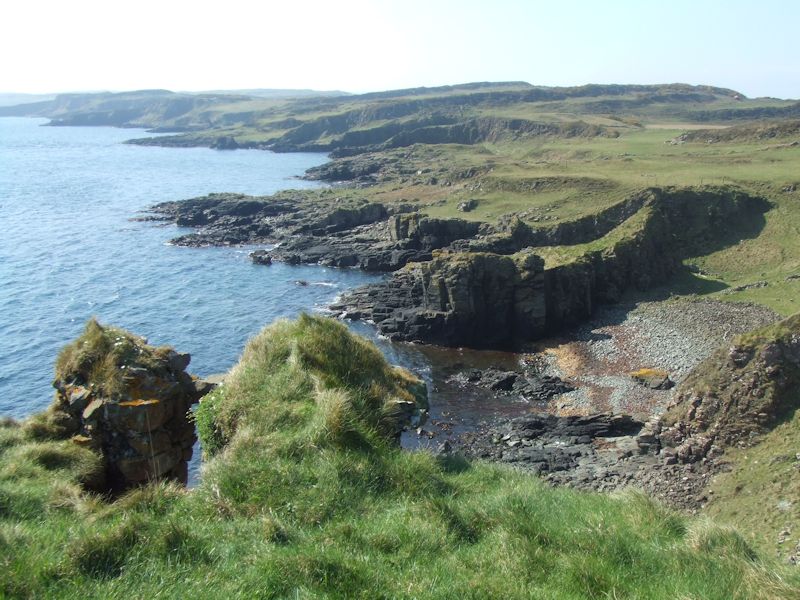
The
view southwards from Bruce's Castle


After
all this grim talk of atrocities, it's getting time for a little snack.
A
lesson in not leaving your camera unattended. Sitting down for a little pre-lunch
snack, getting up again afterward -- it's not as easy as it once was, and it's
certainly not graceful.
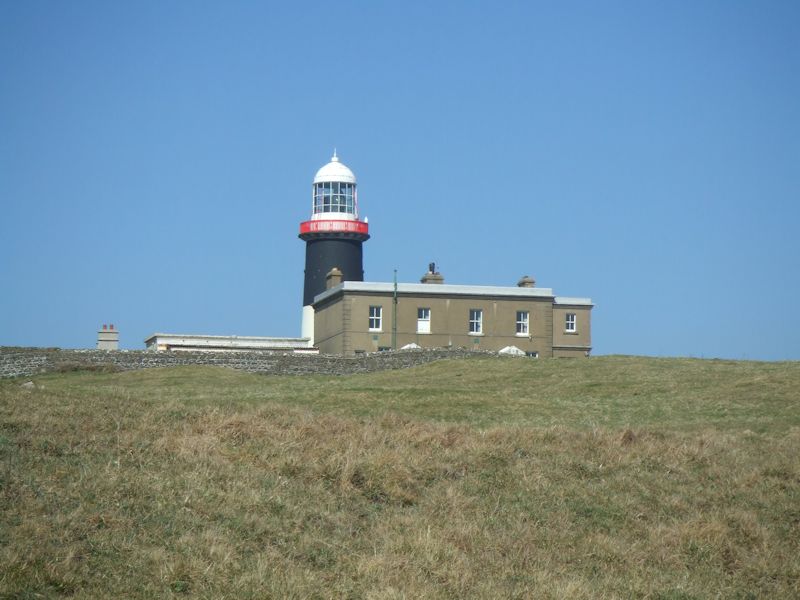
| *
Munro-ing is a British hobby of walking up and checking off on printed lists the
ca.540 mountains in Scotland over 3000 feet high (915 meters) that were catalogued
in 1891 by Sir Hugh Munro (or the ca.300 now recognized by the Scottish Mountaineering
Club as separate peaks). Martin Moran did all of them in one winter season, 1985
(I read his book enviously); Steven Fallon has completed the whole Munro list
13 times. But we're Marconi-bagging instead. |
The
East Lighthouse has been flashing warnings, etc., off Altacarry Head since 1856,
but more importantly for those of us who have made a munro-like
hobby* of checking off Marconi sites around the world, it was here that
Guglielmo Marconi and his pal installed a wireless
transmitter for Lloyd's of London and in July 1898 transmitted the first commercial
radio signals, sending advance warning across to Ballycastle of the successful
return of transatlantic Lloyds-insured ships returning to Liverpool around the
northern coast of Ireland.
We're
so pleased, because this is our first Marconi site
since visiting the "Marconi Lookout" on Fogo
Island, Newfoundland, in 2006, whence the clever inventor tried to send the
first transatlantic radio signals to Europe in 1911.
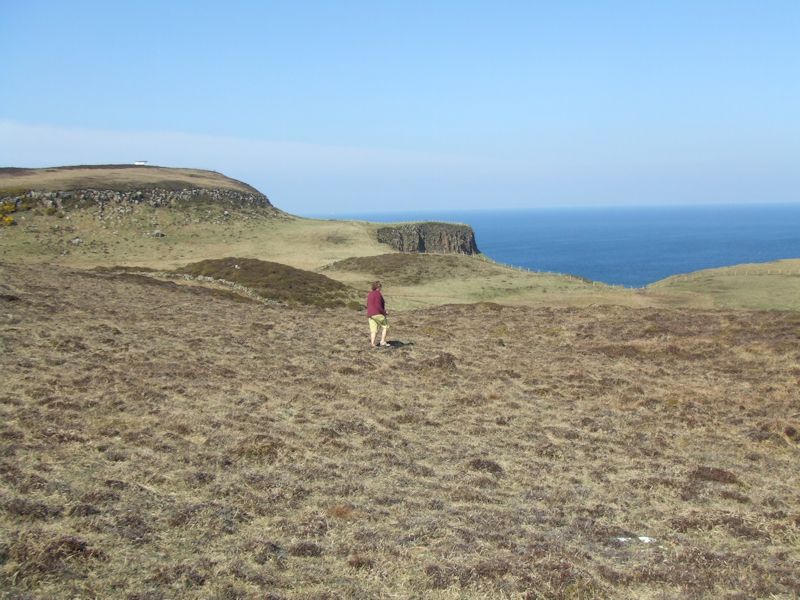
Lost again
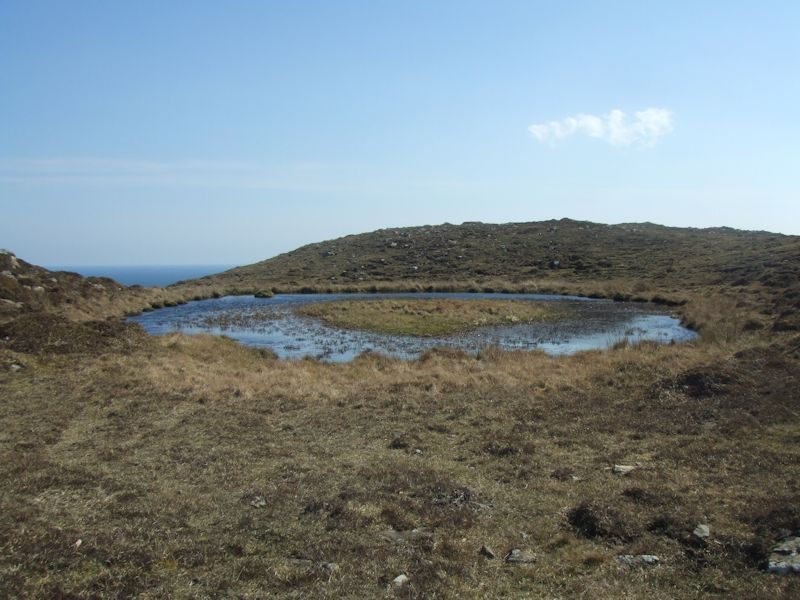
A
small mountain tarn, west of the East Lighthouse.

And
there's the East Lighthouse itself, from the little tarn.
(Scotland can just
be discerned on the left horizon on a hazy day, 11 miles off.)
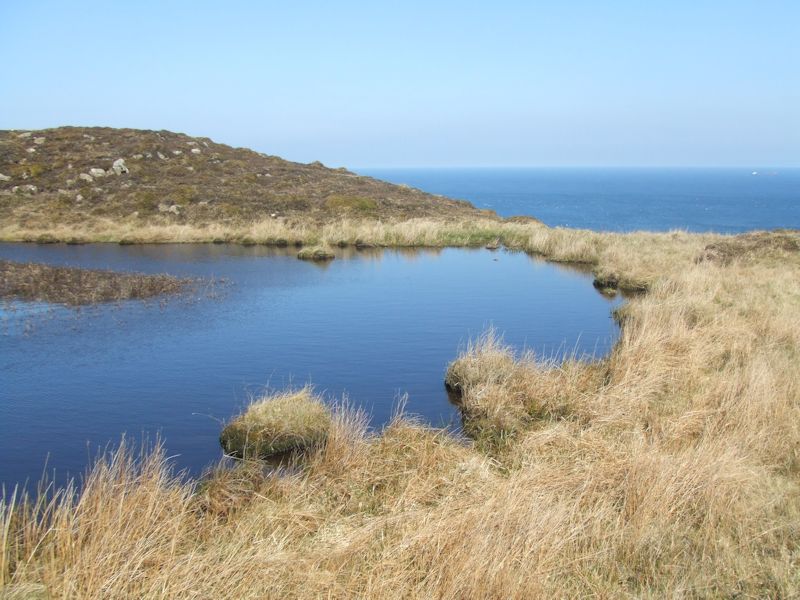
This
is such a neat pond that, whilst Kristin wandered off a few kilometres away
to find a good place for lunch, I lingered long and took pictures of it from different
aspects.
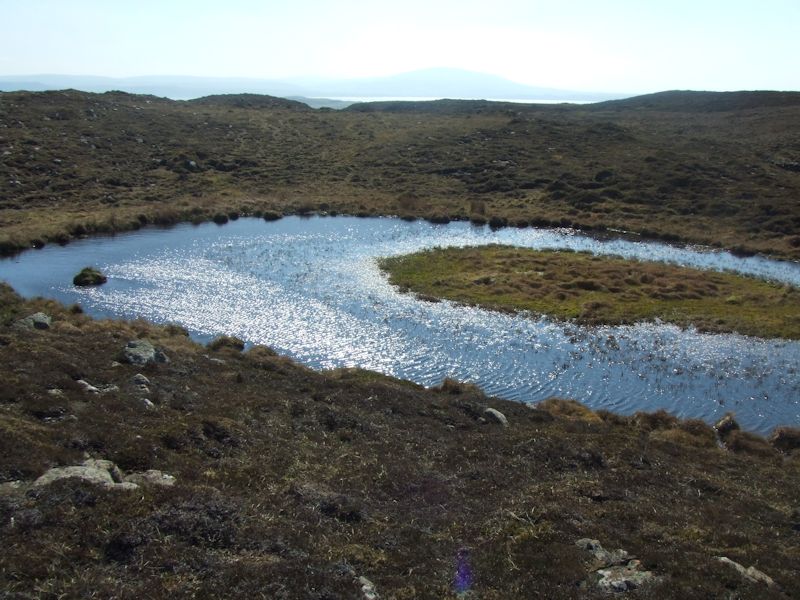
That's
Fair Head on the horizon.
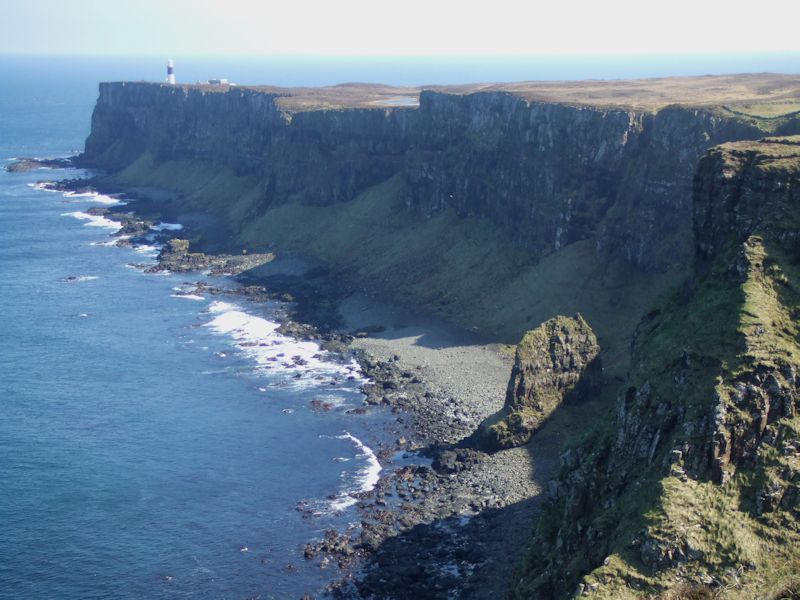
The
East Lighthouse again as we hasten to rejoin Kristin farther along the coast before
the lunch is gone.
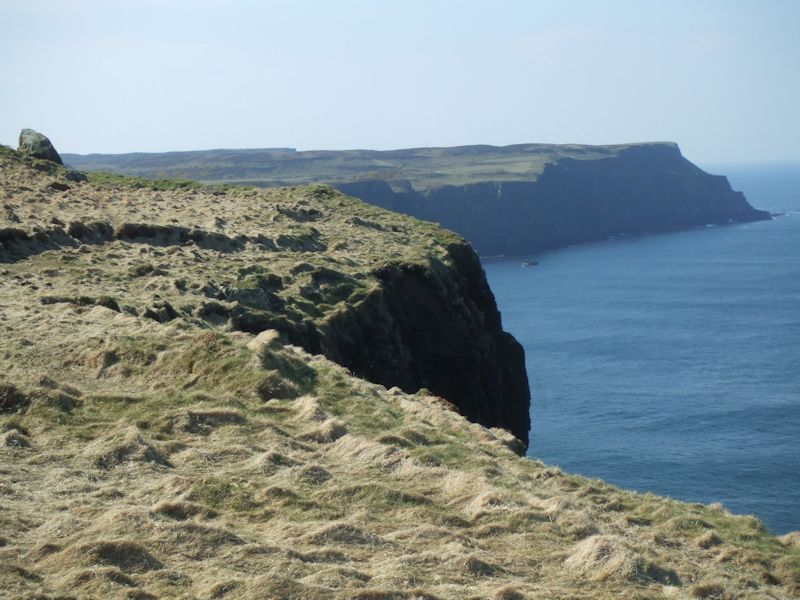
And
still farther along the Rathlin Island coast, looking to the west.
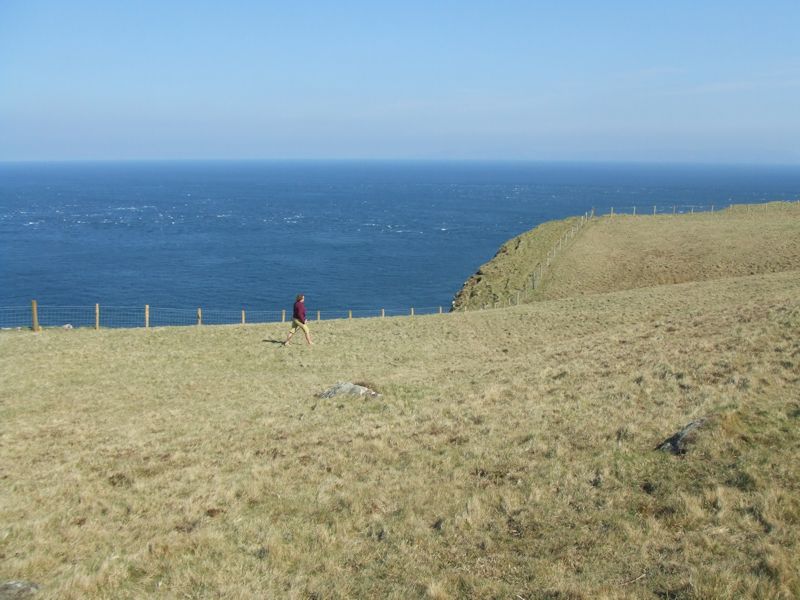
Blocked
in our lunchward path by cliffs, we are circling back around towards the WWII
Coast Guard lookout on Ballyconagan, a National Trust property since 1997.
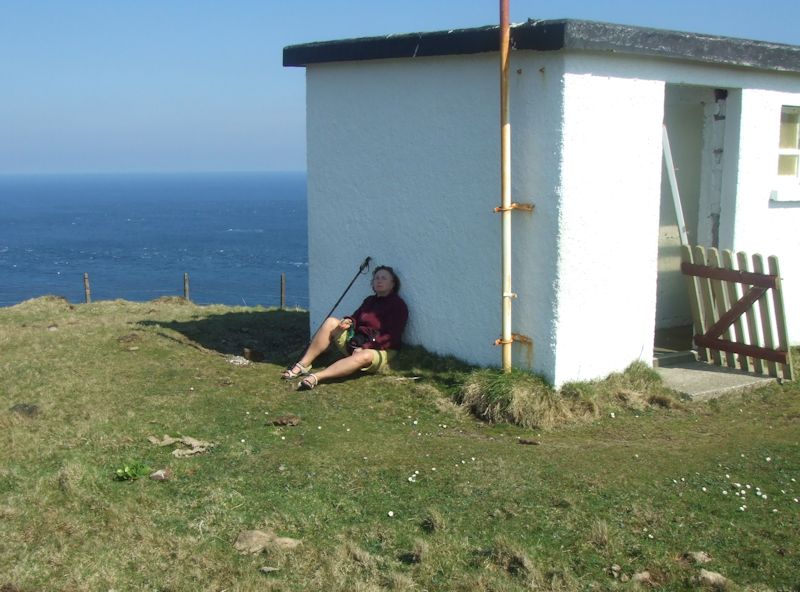
Coast
Guard lookout, and lunch.

Another
lovely pond on the way back to Church Bay
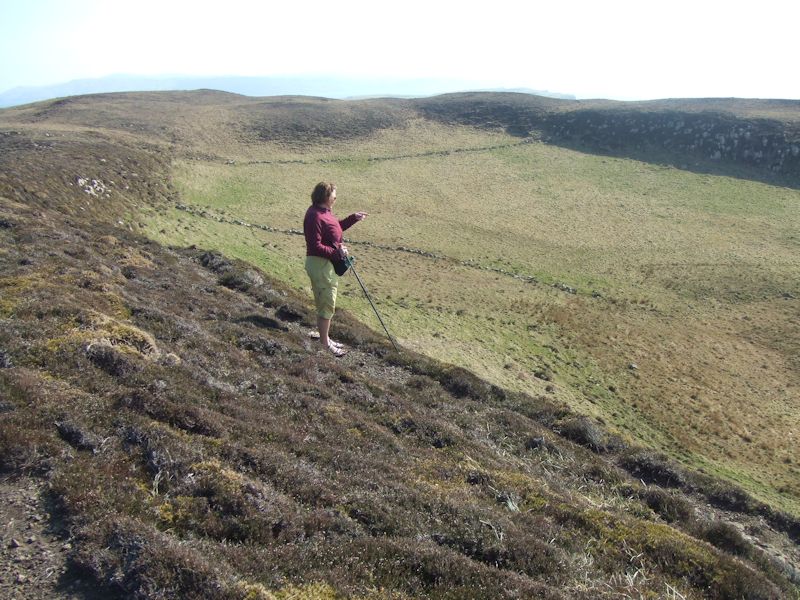
Kristin
pointing towards McCuaigs pub over in Church Bay -- following which, a giant piece
of salmon at The Manor House (that's a sarcastic private joke).
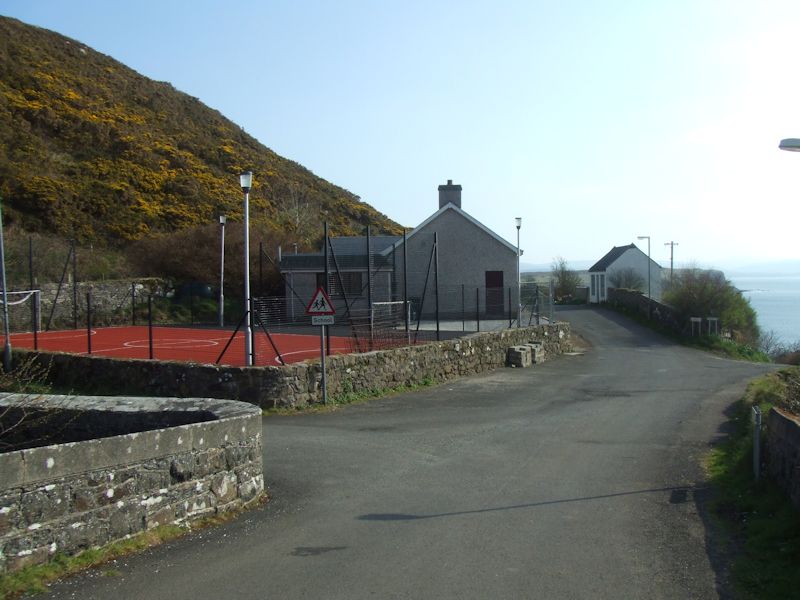
The
village school. Children above 11 years of age have to go off to boarding schools
on the mainland. The under-11 children go to school here -- three siblings from
one family and the son of our hosts at The Manor House. That's 4 in all, this
year.

The
lower church -- the Gage family church, in fact.
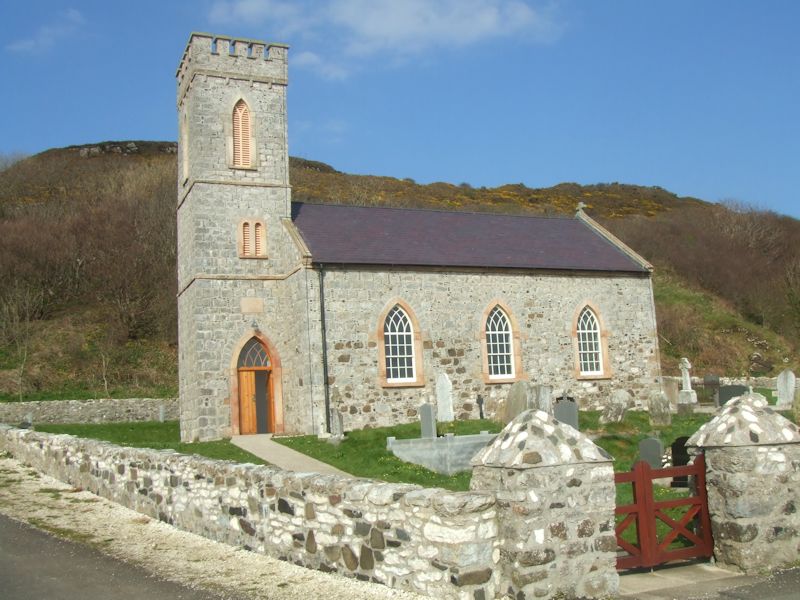
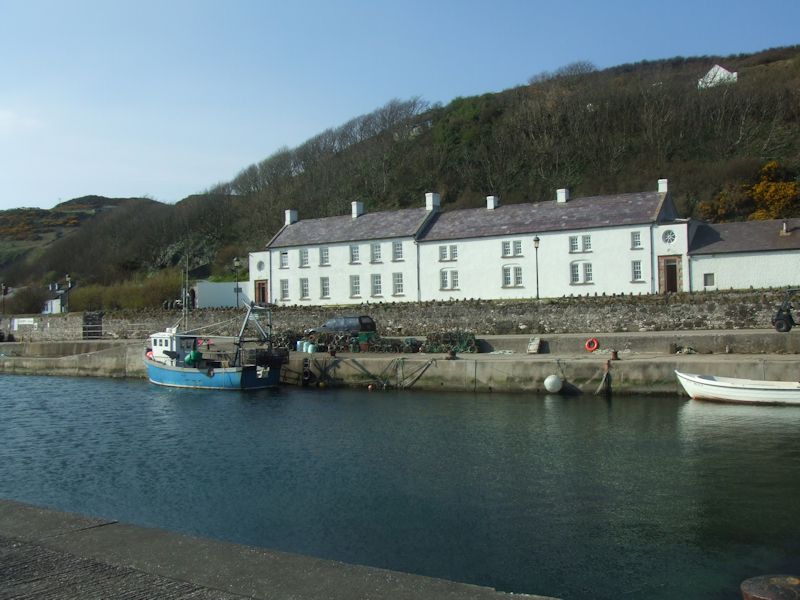
The
Manor House again, an extremely lovely building. Richard Branson of Virgin fame
contributed significantly to renovating the whole row of buildings there, in gratitude
for having been rescued after crashing his transatlantic hot-air balloon just
off the northern coast in 1987.
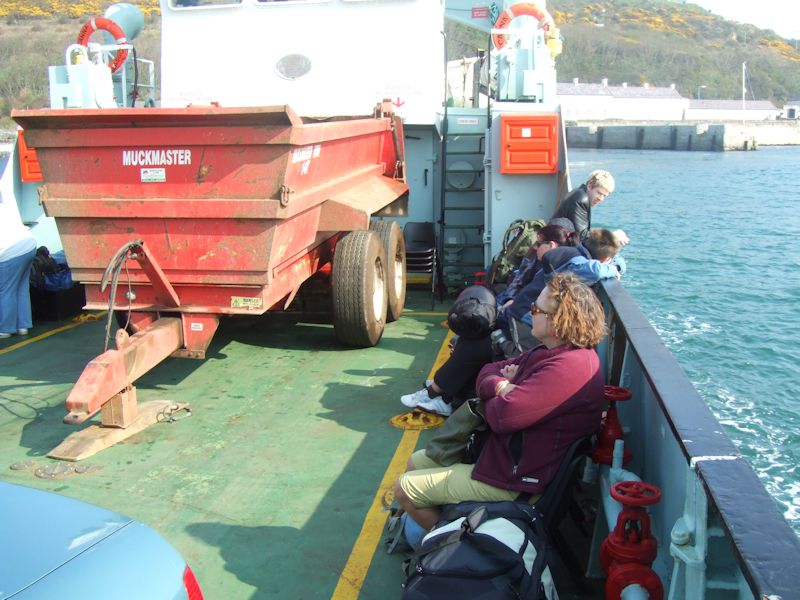
Leaving
Rathlin Island: Kristin and The Muckmaster.

     

 Feedback
and suggestions are welcome if positive, resented if negative, Feedback
and suggestions are welcome if positive, resented if negative,  .
All rights reserved, all wrongs avenged. Posted 9 May 2007, revised 27 March 2008, 12 August 2014. .
All rights reserved, all wrongs avenged. Posted 9 May 2007, revised 27 March 2008, 12 August 2014.
|
 Dwight Peck's personal website
Dwight Peck's personal website



















